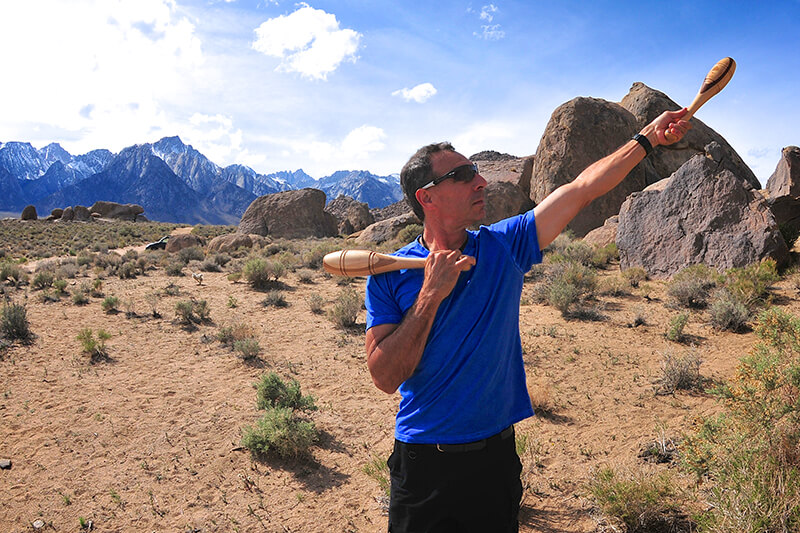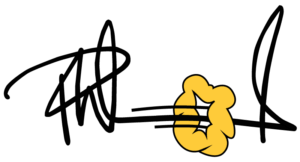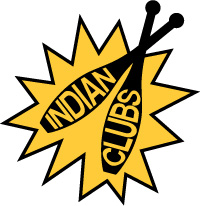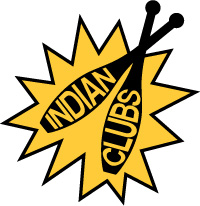Ron Jones
Ron Jones, Corporate Wellness Coach and Kinesiologist, is the founder of The Lean Berets, podcast radio show co-host/production engineer, and webmaster. Ron and The Lean Berets provide wellness, injury prevention, and health promotion for corporations, organisations, and community groups.
Ron Jones very kindly offered to host an Indian Clubs workshop as part of my Indian Clubs World Tour 2015. It was a beautiful sunny Californian day, and we spent the whole day swinging Indian Clubs outdoors, followed by Persian Meels and Gada Mace.
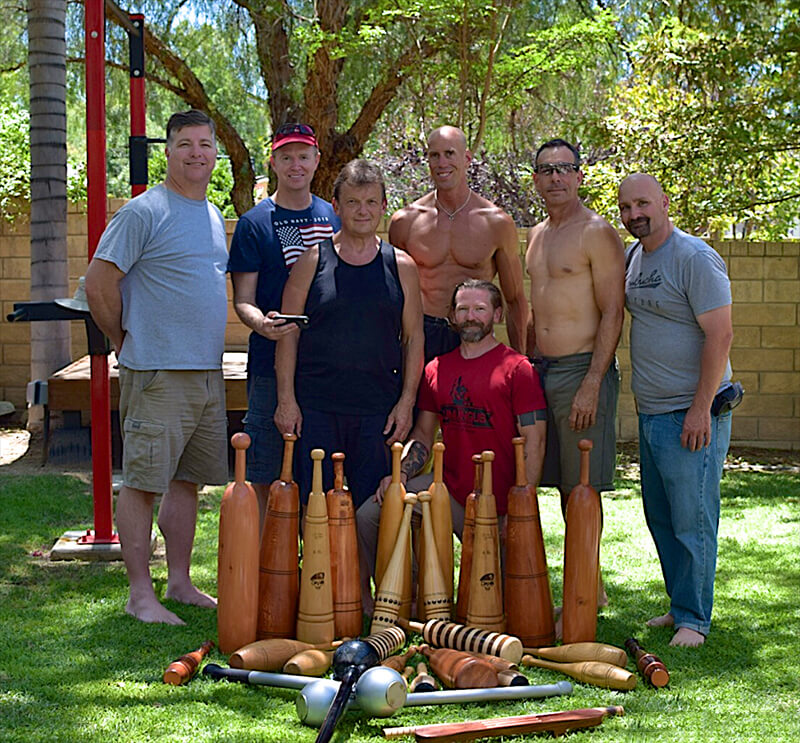
Left to right:- Patrick Brennan, Doug Orchard, Paul Taras Wolkowinski, Kevin Rail, James Neidlinger, Ron Jones and Phil Roland.
When did you start swinging Indian Clubs?
Ron Jones:- I made my first “attempt” around 2006; I failed miserably! I tried to follow some video instructions and became so frustrated that I put them away for two full years! It’s funny now when I look back and when I teach people for the first time on clubs… this is why I keep clubs so simple at the beginning with folks.
Around 2009, I sought out a demonstration by Army Maguire in Los Angeles at an event so I could actually see someone in person using clubs because I still had only tried them alone. Army invited me to train with him after the event, and I took him up on his generous offer.
In just 15 minutes of personal instruction, I started to get the basics, and that really marked by actual beginning for clubs which led me into training with Dr Ed Thomas personally and other teachers, colleagues, and mentors plus a lot of solo practise after I know how to practice.
What sparked your interest in Indian Clubs?
Ron Jones:- I have been interested in the history of fitness and PE since the 1990s. I kept seeing these “club things” in old photos which I found intriguing because I had no idea how they were used.
I found some vintage clubs on eBay and bought them for decorations, yet I still had no idea how or why they were used.
I then started seeing Dr Ed Thomas associated with Indian Clubs which led me to find some DVDs and other information on them. Once I found Dr Thomas as the source, I began to learn “why” the clubs were used and that thousands had used them for generations. When people use one tool for generations—they are worth looking at again even if we don’t quite understand all the details today.
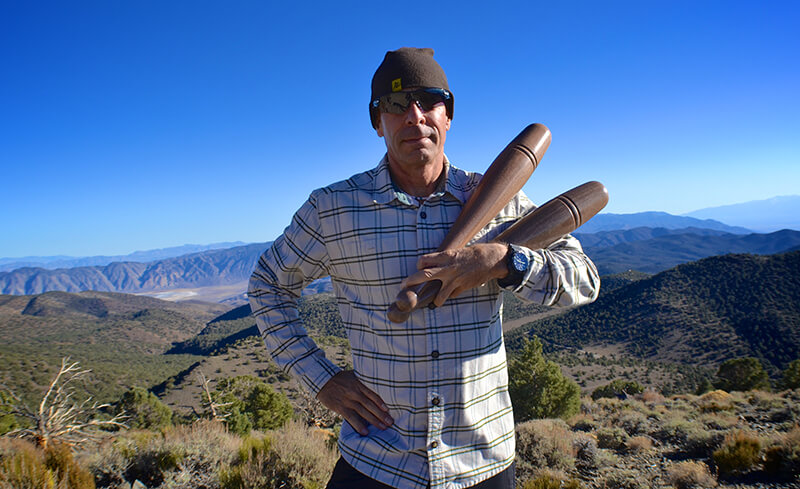
Why do you enjoy Indian Club exercise?
Ron Jones:- Currently, I would have to see it’s the neurological benefits for my brain and body. When I began clubs, it was about shoulder mobility and upper back strength, but as I got deeper into the clubs and expanded my education into neuroscience and the history of PE and fitness, I realised our elders also prioritised brain benefits of clubs which can then be validated with current brain science as well.
I also enjoy the hand agility challenges which enrich the brain benefits even more. I like to do lots of hand switching with single clubs or grip changes with double clubs too. I’m fascinated with the healing patterns of health which history shows are circular, spiral, and figure 8. Look at the clubs in motion, all these restorative patterns are there.
Do you swing Indian Clubs one or two-handed?
Ron Jones:- I like double clubs with lighter one pounders. If I get into my 2.5 pounders or higher, I’ll often use one club with lots of hand switches. Both methods are enjoyable and beneficial and needed in my opinion. When I shift to Persian Meel, I prefer one club with more hand switches.
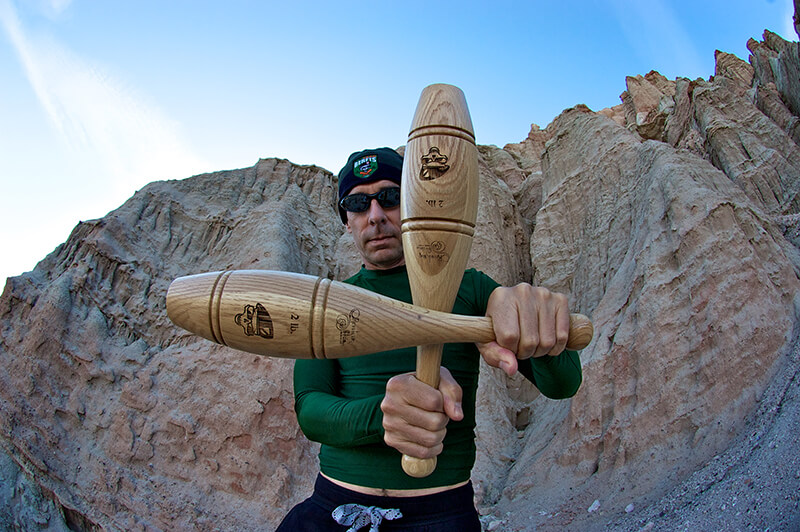 |
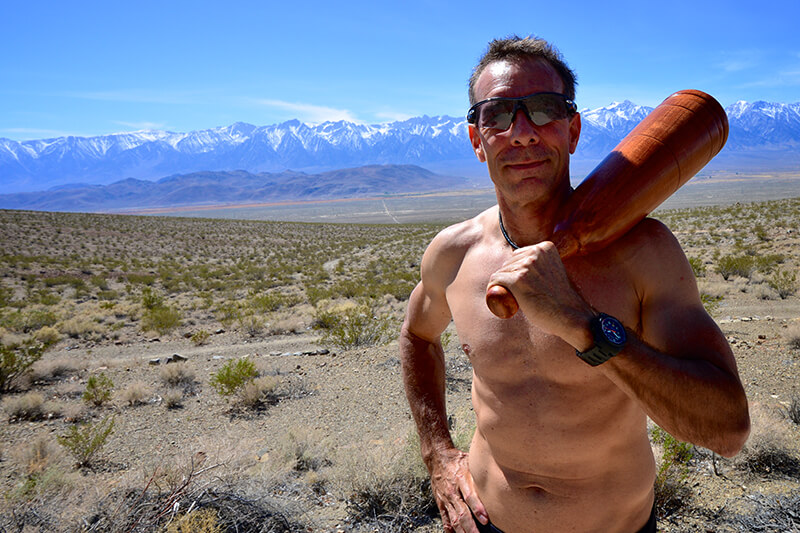 |
If you were to be cast away alone on a desert island, which pair of Indian Clubs would you choose to have with you?
Ron Jones:- For Indian Clubs, it would have to be my Revolution Clubs one pounders which are made from walnut and maple wood. These have been my favourites for a long while because they are light enough for wrist drills but at higher volume are still great for other larger patterns as well.
I prefer lighter Indian Clubs with more finesse rather than struggling with heavier Indian Clubs that can cause my form to degrade. For “one” Meel club, it would be my six-pound meel by Revolution Clubs. Please give me both so I can keep it interesting!
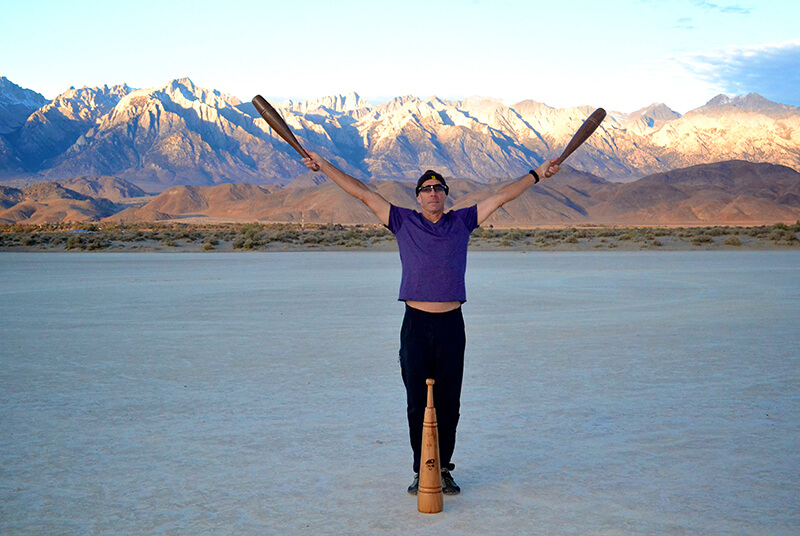
What are the characteristics of your favourite Indian Clubs?
Ron Jones:- I tend to like smaller knobs with flat bottoms. I also have some teardrop clubs which are very nice, but I always come back to the basic “British” clubs with flat bottoms and at the lighter 1-2.5 pound weights.
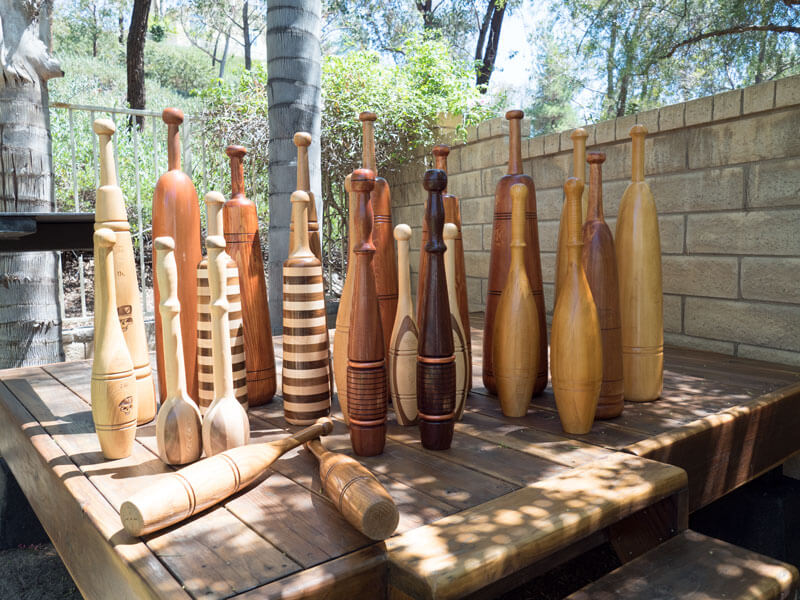
Why did you decide to become an Indian Club trainer?
Ron Jones:- I’m a credentialed physical education teacher and movement coach. I want to use what works the best in the least amount of time with the least cost for my clients and athletes. Indian Clubs are all of the above and beyond. They work—and well when you know the classical methods and nuances of how they were used.
They are also safe tools to use compared to many other options in fitness so more practical. They are space conservative and travel well. They last forever unless you need a campfire in a blizzard! This with the incredible brain fitness benefits makes Indian Clubs a great choice for training myself, family, friends, clients, and athletes from youth to professionals.
What are the benefits of Club swinging for people?
Ron Jones:- They open the doors of history. When you learn about the history of movement, you can predict the future of fitness too and start using what worked well instead of trying to figure out something new. Indian Clubs were part of the “Restorative Arts” content area of classical fitness and PE during the “Golden Era of Fitness” from around 1885-1920.
Clubs were one of the “Four Horsemen” of Restorative Arts; the other three were Health Wands, Medicine Balls, and Light Dumbbells. Indian Clubs were a huge shift for me as I realised how complex and sophisticated they were. I had a new respect for history after getting into clubs. They make you ask what else can we learn from history?!!! Then you start learning about wands, classical gymnastics, other clubs like Persian Meels, Maces, etc.
Indian Clubs should be “GO TO” tools for anyone interested in improving brain fitness and the quality of movement skills. In just a few minutes per day after proper instruction, Indian Clubs can change your life for the better whether you are a technology worker or a professional athlete.
How do you keep your Indian Club knowledge up to date?
Ron Jones:- I’m a good student. I’m always learning from someone whether it be historical texts or my many friends in the global community of Indian Club swinging. It’s really a nice group of people that seem sociable and helpful. Because of this collaborative philosophy, we are all learning more efficiently with more enjoyment in my mind. I have a number of teachers and mentors that help me hands-on too. There is no substitute for personal instruction!
The books and DVDs and YouTube videos are great, but you really need to train with other people in person even if its just others starting to learn. We can all help each other improve… for life. I have learned a lot about clubs training with Paul Taras Wolkowinski, Army Maguire, Ed Thomas, Rocannon Macgregor, Jake Monlux, Tara Scott, James Neidlinger, Shane Hylton, Kevin Rail, and Philippe Til.
I’ve also been learning from Andreas Vogelsang who claims he creates patterns after learning from me which is pretty funny. Nic Branson is breaking down some nice patterns too. There are others doing nice work on clubs too. It’s really a great group of folks.
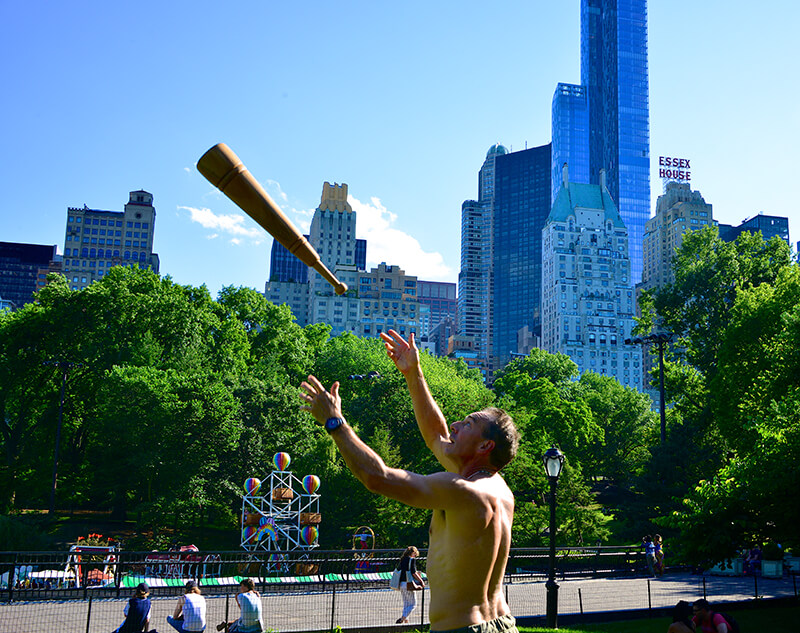
Out of all the old books written about Indian Clubs, which one is your favourite and why?
Ron Jones:- I don’t think “one” exists from my perspective. Each one has its strengths, but I have not seen one definitive source that I could say is “the” best book on club swinging. I have dozens of resources at this point; I use all of them to some degree, but again, the personal time spent with others doing clubs has been more important to me than the books because the diagrams in the books are quite complicated and difficult to understand and duplicate.
Is there anything else you would like to share?
Ron Jones:- First, I would like to thank Paul Taras Wolkowinski for becoming an ambassador of club swinging globally. He’s done an honourable job coordinating this resurgence of classical movement into a wonderful and collaborative community of caring individuals working together to help others. I’m proud to be a small part of the larger group and grateful to know Paul and have trained with him personally in Los Angeles last year.
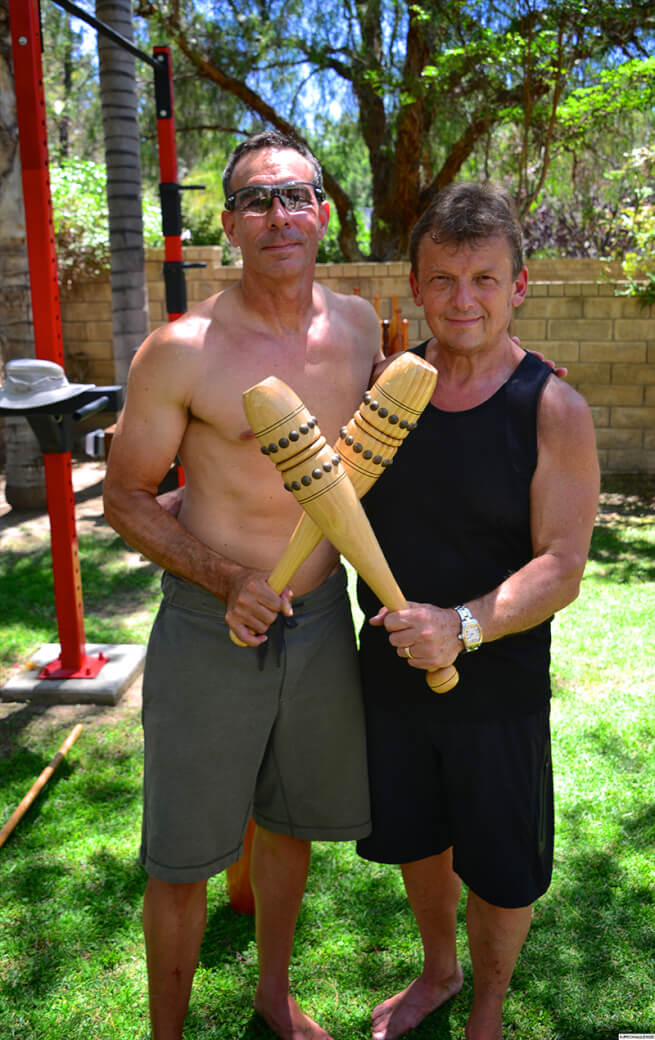
Ron Jones:- A few other points are important regarding clubs too. There is no “one” best club or club company. If you get into clubs, you need to have different pairs of various styles and weights. We have many nice club companies now. Explore all of them. Each will have nice options.
Here are my favourite club companies and why… Revolution Clubs in Texas because they have good stock with many varieties from smaller Indian Clubs suitable for children to larger Persian Meel clubs. Rosewater Kinetics because they are so custom and creative; some of my coolest clubs come from RK in Idaho. Army Maguire of Ageless Strength makes clubs of amazing quality too; Army has a nice line of heavier meels than other companies, but he also has smaller clubs. Army’s 3 pound classic maple clubs are some of my nicest clubs.
While most of us like “real clubs” made out of wood, polycarbonate clubs are good too especially for commercial gyms. You should ideally have both poly and organic so you can show people the difference.
Indian Clubs are nice, but Persian Meels are incredible to use as well. We need Meel Clubs that are lighter and shorter in length so the ladies can get more involved, and I’m hoping to see this developed in the next year or so as more women and younger people get interested.
Keep it simple. If you don’t have clubs, just pick up a stick and use the same patterns. Start where you can… and stay the course for moving well with brain and body.
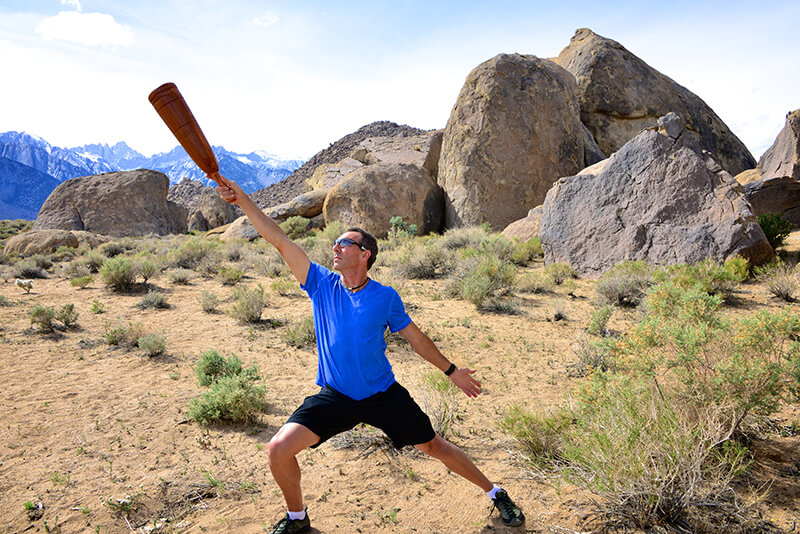
While I like to get as close to the original sources as possible, my preferred “style” of clubs is somewhat of a hybrid. Once you know the philosophy of the clubs, it’s fun to be creative while exploring various motion patterns, angles, grips, and at times even playing around with the clubs which can involve “throwing” a meel club into the air and catching it upside down in the palm of your hand.
Interestingly, after doing some “inverted” club balancing and thinking I was a little different, I found a whole section on inverted club balancing in one of my historical texts from a hundred years ago! If I had to strip down “my style” of clubs, I would say it is the single meel club of about six pounds with lots of hand switches and lane changes that go from the front of the body to the rear of the body and at diagonals as well.
Circles, slashes, loops, spirals, twisting, and turning with some good music in the background has made some of THE most joyous exercise sessions of my 50+ plus year of living. So learn the basics, but explore your own style too with quality of control and neurological awareness.
Website: The Lean Berets
Bio: http://theleanberets.com/wp-content/uploads/2014/01/RJ-BioFlyer.pdf
Phone: 661.993.7874
Location: Southern California in Northern Los Angeles County
PO Box: 801512, Valencia, CA 91380

